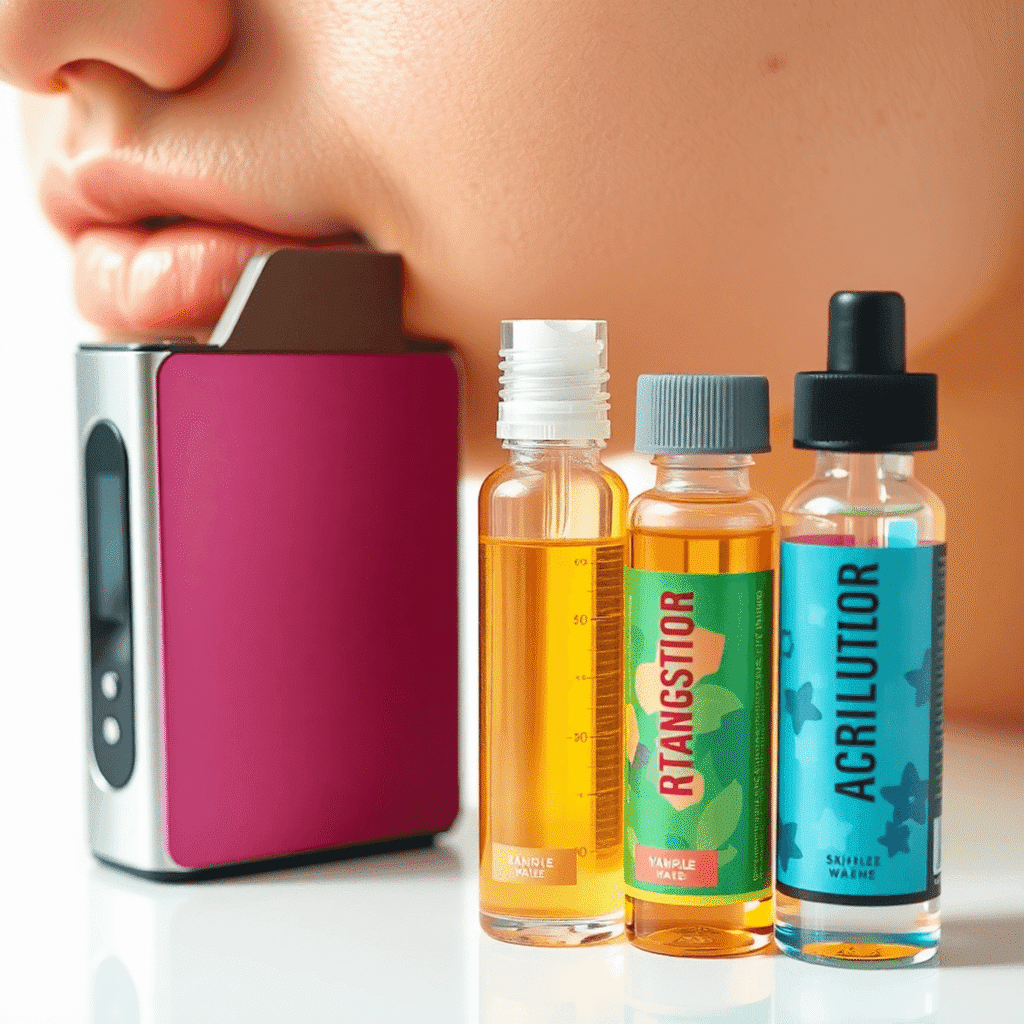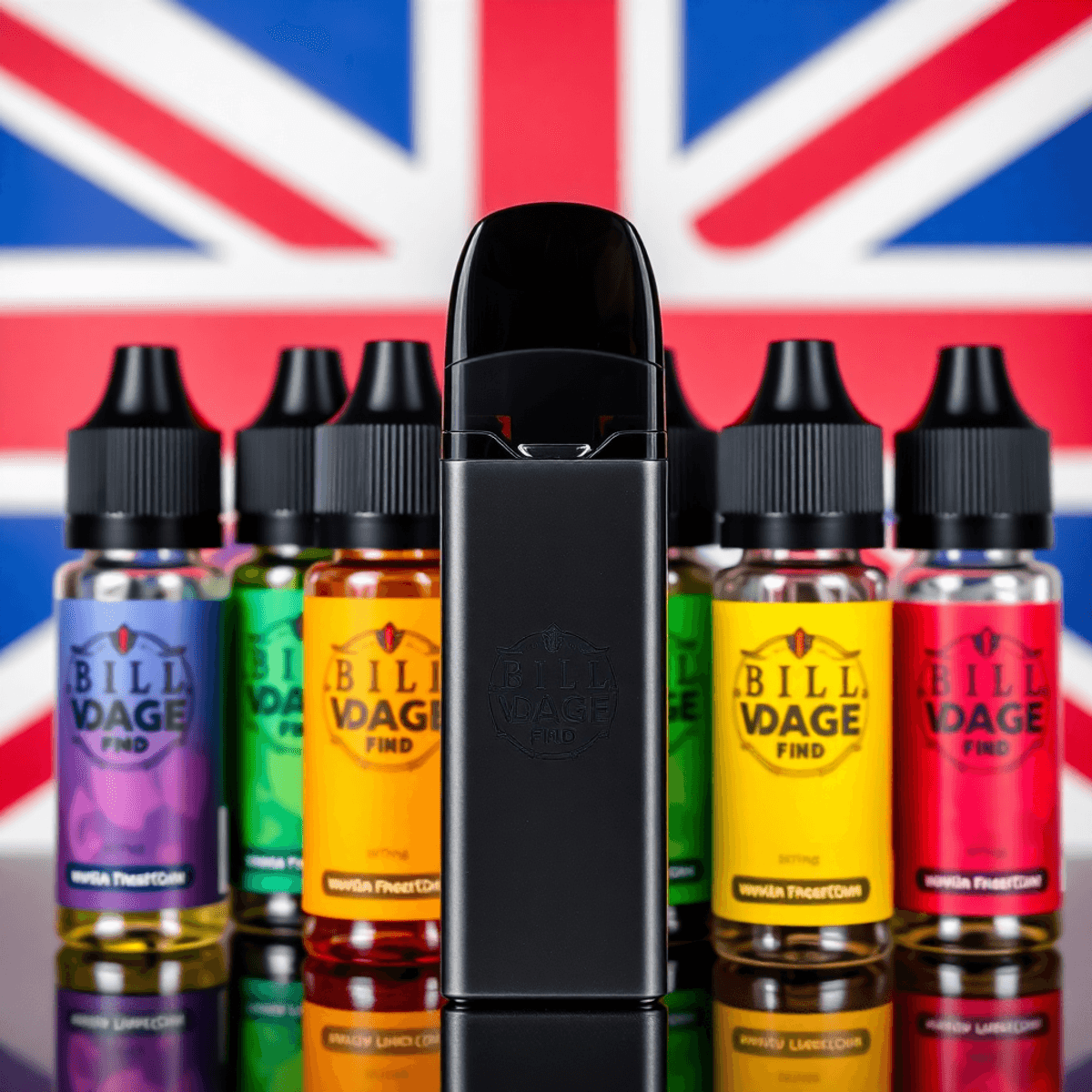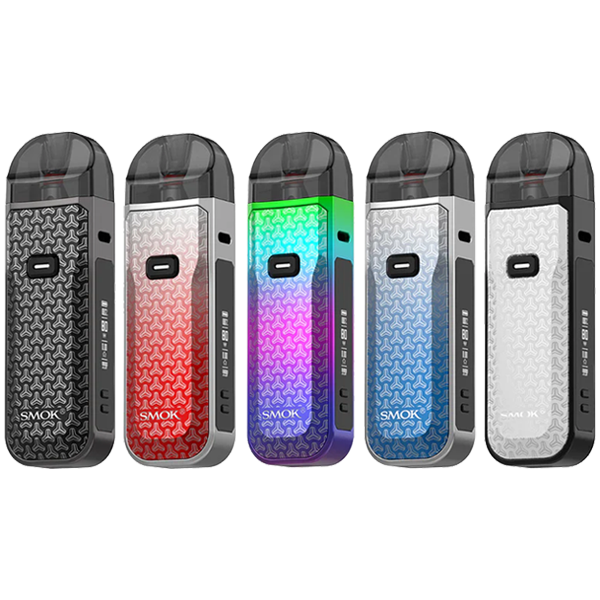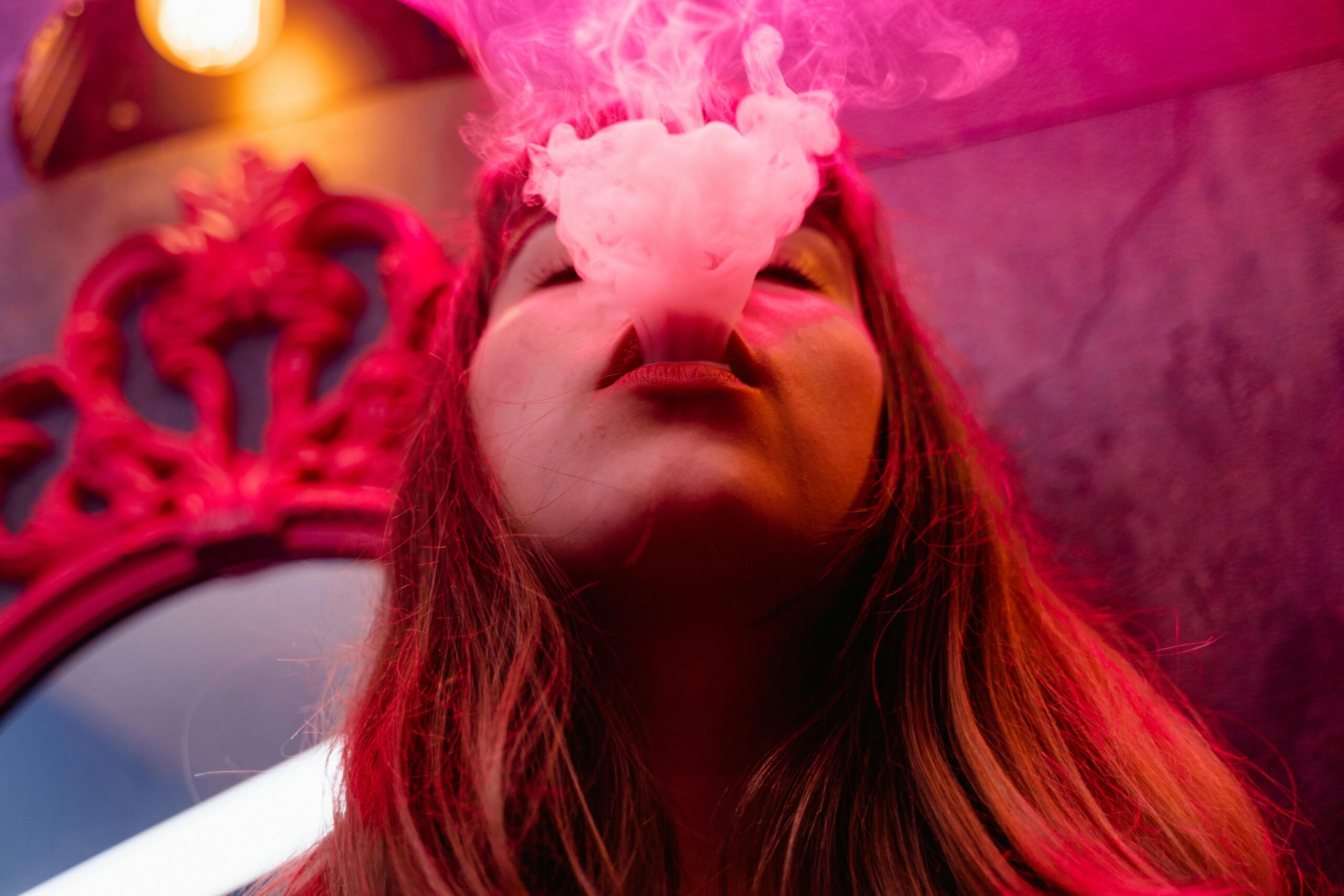The rising popularity of vaping has sparked questions about its effects on skin health, particularly its potential link to acne. Vaping involves inhaling vapour created by heating e-liquids in electronic devices – a practice many consider a safer alternative to traditional smoking.
Acne, a common skin condition affecting millions worldwide, occurs when hair follicles become blocked with oil and dead skin cells. These blockages can lead to:
- Whiteheads
- Blackheads
- Painful cysts
- Inflammatory spots
Recent research suggests a possible connection between vaping and acne breakouts. The ingredients in e-liquids, combined with the physical act of vaping, might affect skin health through various mechanisms. From dehydration to hormonal changes, the relationship between vaping and acne development has become a growing concern for both healthcare professionals and vape users.
Understanding this connection is crucial for making informed decisions about vaping, particularly for those prone to skin issues or currently managing acne conditions.
How Vaping Can Impact Skin Health
Dehydration and Excess Oil Production
Vaping liquids contain two primary ingredients: propylene glycol and vegetable glycerine. These substances are known humectants, meaning they attract and bind to water molecules. When inhaled, they can pull moisture from surrounding tissues, including the skin. This dehydrating effect triggers the skin’s natural defence mechanism – increased sebum production.
The skin responds to dehydration by producing extra oil to protect itself. This surge in sebum production can lead to:
- Clogged pores
- Bacterial growth
- Formation of comedones
- Increased acne breakouts
Blood Circulation and Hormonal Changes
Nicotine, a key component in most vaping liquids, causes blood vessels to constrict. This vasoconstriction reduces blood flow to the skin, resulting in:
- Decreased oxygen delivery to skin cells
- Reduced nutrient supply
- Impaired waste removal
- Slower skin healing
The presence of nicotine also triggers the release of stress hormones, particularly cortisol and androgens. These hormones stimulate oil glands, leading to:
- Increased sebum production
- Enhanced bacterial growth
- Greater inflammation
- Higher risk of acne formation
Pore Clogging and Residue Build-up
Vaping creates a fine aerosol that settles on the skin, particularly around the mouth area (perioral region). This residue contains:
- Sticky propylene glycol
- Heavy vegetable glycerine
- Flavouring compounds
- Nicotine particles
These substances can accumulate on the skin surface, mixing with natural oils and dead skin cells to form a pore-blocking mixture. The perioral region often shows the most severe effects, displaying:
- Localised breakouts
- Blackheads
- Whiteheads
- Persistent acne
Inflammation and Oxidative Stress
The chemical compounds in vape aerosols trigger systemic inflammation and oxidative stress in the body. This internal disruption manifests externally through:
- Increased skin sensitivity
- Enhanced inflammatory responses
- Compromised skin barrier function
- Higher susceptibility to cystic acne
The oxidative stress caused by vaping can damage skin cells and impair their natural repair mechanisms. This cellular damage combines with inflammation to create an environment conducive to severe acne development, particularly cystic acne characterised by:
- Deep, painful lesions
- Persistent inflammation
- Increased scarring risk
- Resistant to typical acne treatments
Skin Irritation, Allergic Reactions and Aging Effects of Vaping on Acne Development
E-liquid components can trigger significant skin reactions, particularly from flavouring agents. These chemical compounds might cause:
- Skin redness and inflammation
- Contact dermatitis
- Heightened skin sensitivity
- Increased sebum production
Users sensitive to specific e-liquid ingredients often experience allergic reactions manifesting as skin breakouts. Common allergens include:
- Propylene glycol
- Artificial sweeteners
- Fragrance additives
- Nickel from device components
The relationship between vaping and skin aging presents additional concerns for acne sufferers. Nicotine and other compounds in e-liquids can disrupt essential skin functions:
Collagen Production
- Reduced collagen synthesis
- Weakened skin structure
- Compromised healing ability
- Increased likelihood of acne scarring
Research indicates that vaping can interfere with the skin’s natural repair processes, making acne scars more prominent and longer-lasting. The combination of reduced collagen production and compromised healing responses creates a challenging environment for skin recovery.
Skin Repair Mechanisms
- Delayed wound healing
- Impaired skin barrier function
- Reduced skin elasticity
- Prolonged recovery from breakouts
These effects become particularly noticeable in areas directly exposed to vapour, such as:
- Around the mouth
- Lower face region
- Chin area
- Upper lip zone
Vaping products can exacerbate these issues. Users with existing skin sensitivities might experience more severe reactions, leading to persistent acne breakouts and increased scarring potential. The chemical compounds in e-liquids can accumulate in skin tissues, prolonging irritation and hampering natural healing processes.
Moreover, the type of e-liquid used can also play a role in these adverse effects. For instance, high nicotine content e-liquids or flavoured options may have different impacts on the skin compared to those with lower nicotine levels or different compositions.
While vaping may seem like a harmless alternative to smoking, its potential effects on the skin and acne development should not be overlooked. Understanding these implications is crucial for users who wish to maintain healthy skin while using vaping products. As highlighted in various studies, including this one on skin irritation and allergic reactions related to vaping, it’s essential to be mindful of what we expose our bodies to. Furthermore, another study emphasizes the aging effects of certain substances on the skin.
Effects of Quitting Vaping on Acne
Stopping vaping can trigger temporary skin changes as your body adjusts to life without nicotine and other vaping chemicals. Many people experience an initial increase in acne breakouts during the first few weeks after quitting – a phenomenon known as quit-related purging.
Initial Skin Changes
- Increased oil production from hormonal fluctuations
- Temporary inflammation and redness
- Breakouts concentrated around mouth and chin areas
- Skin purging of accumulated toxins
The body undergoes significant hormonal adjustments when nicotine is removed from the system. These changes can temporarily disrupt sebum production and cause acne flare-ups. The skin also begins a natural detoxification process, pushing out built-up chemicals and toxins that can manifest as spots and blemishes.
For those who have been using vaping products, it’s essential to understand that the removal of these nicotine sources will lead to temporary discomfort but ultimately contribute to long-term skin health.
Long-term Skin Benefits
- Improved blood circulation to skin cells
- Better oxygen and nutrient delivery
- Enhanced natural moisture retention
- Stronger collagen production
- Reduced inflammation
While the initial breakout phase can be discouraging, positive skin changes typically begin appearing within 4-6 weeks of quitting. Blood flow normalises, allowing better delivery of nutrients and oxygen to skin cells. The skin’s natural moisture barrier strengthens as hydration levels improve without the dehydrating effects of propylene glycol and vegetable glycerine found in many vaping products.
Research indicates that former vapers often notice significant improvements in their complexion by the 3-month mark. The skin becomes more resilient and better equipped to fight acne-causing bacteria. The natural healing process accelerates without the interference of vaping chemicals, leading to clearer, healthier skin.
Those experiencing post-quit breakouts can support their skin’s recovery through:
- Gentle, non-comedogenic cleansing
- Regular hydration
- Balanced diet rich in skin-supporting nutrients
- Consistent sleep schedule
- Stress management techniques
These lifestyle factors work together to help rebalance hormones and support the body’s natural detoxification processes during the transition away from vaping. For those still navigating their vaping journey, it may be worthwhile considering a gradual reduction in usage rather than an abrupt stop, which might help mitigate some of the initial adverse effects on the skin.
Conclusion
The link between vaping and acne is significant, yet there are practical steps to minimise skin health impacts while vaping:
- Stay hydrated by drinking plenty of water throughout the day
- Use a gentle, non-comedogenic moisturiser to combat skin dryness
- Clean your vaping device regularly to prevent residue build-up
- Keep your hands clean when handling vaping equipment
- Consider reducing nicotine content in e-liquids for a smoother experience
- Maintain a consistent skincare routine with products suitable for your skin type
- Take regular breaks from vaping to allow skin recovery
For those concerned about acne prevention, consulting a dermatologist can provide personalised advice for managing skin health while vaping. The safest approach to protect your skin remains reducing or stopping vaping altogether. Making informed choices about vaping habits, such as using products with lower nicotine content and implementing proper skin care practices can help maintain healthier skin for those who choose to continue vaping.
FAQs
Does vaping cause acne?
Vaping can contribute to acne development due to various factors such as dehydration, increased sebum production, pore blockage from residue build-up and inflammation caused by nicotine and other chemicals in e-liquids.
How does vaping impact skin health and acne formation?
Vaping affects skin health by dehydrating the skin through propylene glycol and vegetable glycerine, altering blood circulation with nicotine, causing hormonal changes that influence acne, clogging pores with vaping residue especially around the perioral region and triggering systemic inflammation and oxidative stress that can worsen cystic acne.
Can flavouring agents in e-liquids cause skin irritation or allergic reactions leading to acne?
Yes, certain flavouring agents and components in e-liquids can irritate the skin or cause allergic reactions, which may exacerbate acne development. These substances can also impair collagen production and skin repair processes, increasing the risk of acne scarring.
What are the effects of quitting vaping on acne and overall skin health?
After quitting vaping, some individuals may experience initial breakouts due to hormonal adjustments and toxin elimination. However, long-term cessation leads to improved skin health by reducing inflammation, restoring normal hormone levels and enhancing the skin’s natural repair mechanisms.
How does nicotine in vaping products affect blood flow and hormonal balance related to acne?
Nicotine constricts blood vessels reducing blood flow to the skin, which impairs nutrient delivery and waste removal. It also influences hormones like cortisol and androgens that regulate sebum production, potentially increasing acne formation.
What recommendations can help maintain healthy skin while vaping?
To maintain healthy skin while vaping, it is important to stay hydrated to counteract dehydration effects, cleanse the perioral area regularly to prevent pore clogging from residue, choose e-liquids without harsh flavouring agents to reduce irritation, monitor skin for allergic reactions and consider quitting vaping for long-term skin benefits.




